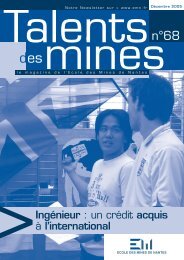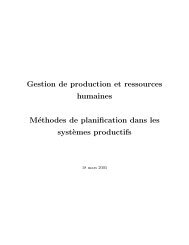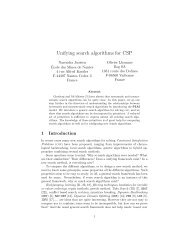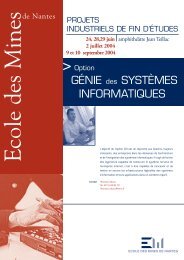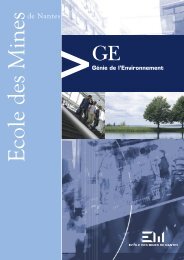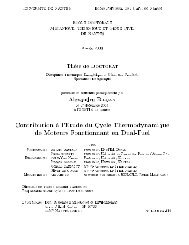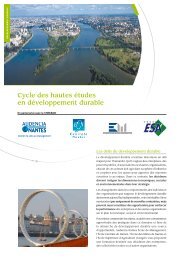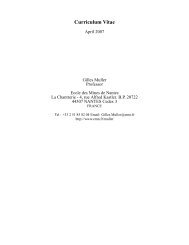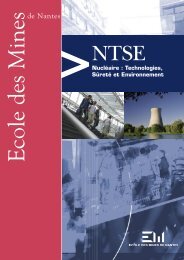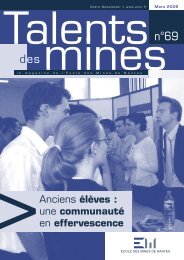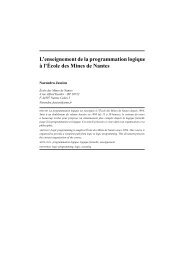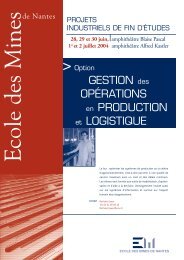pdf - 395 K - Ecole des mines de Nantes
pdf - 395 K - Ecole des mines de Nantes
pdf - 395 K - Ecole des mines de Nantes
Create successful ePaper yourself
Turn your PDF publications into a flip-book with our unique Google optimized e-Paper software.
way Lego blocks should be assembled in a specific, or<strong>de</strong>red manner to build something,learning objects should be used in a specific or<strong>de</strong>r in the context of a course. The prerequisitesthus <strong>de</strong>pend on the course involving the learning objects or on the context in which thelearning object is used.2.2 Feedback for administrators and content provi<strong>de</strong>rs.The observation of the actual usage of repositories enables the application to provi<strong>de</strong>assistance to administrators and content provi<strong>de</strong>rs as feedback.For example it may be possible for administrators, as inspired by the Prototype Categorytheories of E. Rosch [77] and G. Lakoff [78], to discover communities of users and categoriesof content that administrators were not aware of, and that they had thus not ma<strong>de</strong> explicit instatic access facilities like in<strong>de</strong>xes. At a more basic level, if administrators introduce a newinteresting resource and see it is not accessed, they will <strong>de</strong>duce that they should provi<strong>de</strong> morestraightforward access to it.In this sense the application does not substitute itself to static access facilities but it helpsadministrators maintain and improve them. The dynamic nature of the application plays animportant role here. As it keeps “up-to-date”, it follows the evolution of the users’ interests aswell as the evolution of the content of the repository (addition/removal of resources) withoutany human intervention.Concerning content provi<strong>de</strong>rs, they may discover that their resource is used in differentcontexts from the one they expected. Again, the example of the document about bushfires thatcan be handled from an economical and a biological perspective illustrates this point. Abiologist who receives such feedback can then re<strong><strong>de</strong>s</strong>ign his resource, for example extendingits metadata or adding web links to resources related to economical consequences of storms.Obviously extracting feedback from data about usage is not a trivial task. Elaborating adaptedalgorithms is a promising field for investigation.3 Principles of our solutionThe main principles of our solution can be <strong>de</strong>rived from the statement of the approach. Thegeneric and dynamic nature of the application restrains the collected data to the most simpleand general observable actions performed by users: accesses to resources. An access isbasically a piece of information containing:- the i<strong>de</strong>ntity of the user performing the access;- the resource accessed;- the timestamp of the access.By performing sequences of accesses, users <strong>de</strong>fine navigation pathways. Hence all theassistance provi<strong>de</strong>d by the system relies on the dynamic collection of pathways into userprofiles and the computation of these profiles. Although it can seem to be rough, low-levelinformation, its classification and computation can allow for the generation of a higher-levelbusiness intelligence layer (BIL) providing useful assistance. For the elaboration of this BIL,pathways can be handled from 2 different perspectives: user and resource. It is through theMSc EMOOSE Thesis – http://www.emn.fr/EMOOSE 30



